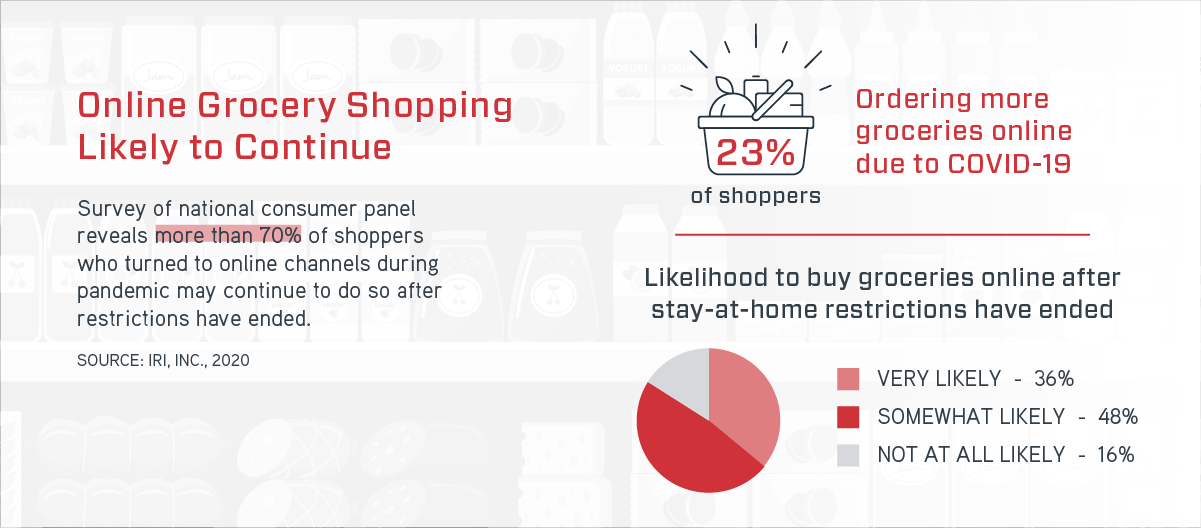Europe, Middle East, Africa (EMEA)
Asia Pacific (APAC)
Americas (AM)
- Automated Mailer Bags and Pouches
- Bubble Bags
- Bubble Bundles
- Fabricated Foams
- Flooring Underlayment
- Instapak® Foam Packaging
- Korrvu® Suspension and Retention
- Mailers
- On-Demand Inflatables
- Paper Void Fill Solutions
- Paper Wrapping Solutions
- Recycled Bubble
- Shrink Films
- Surface Protection Foams
- Temperature Assurance Bags and PUR
- Advanced Customer Training
- AUTOBAG® Product Resource Library
- AutoLabel Software Tools and Support
- Customer Service
- Custom Bagging Machine Applications
- Custom Engineering and Integrated Systems
- Factory Service Repair Center
- Field Service and Preventive Maintenance
- Financing and Payment Options
- Graphics, Art & Imaging for Custom Branded Bag Packaging
- Systems Advantage: The Total Systems Approach to Bag Packaging
- Technical Phone Support

Limited Touchpoints Ease Consumer Concerns
Consumer use and purchase patterns that were once fairly predictable have now become subject to uncertainty and change. Consumer concerns about contamination during handling are driving the need to limit touchpoints wherever possible throughout the supply chain. .
Right now, it’s hard to know exactly what the future holds for the retail grocery landscape, but it’s likely that case-ready packaging may play a key role in helping processors and retailers prepare for what lies ahead.
Case-ready meat packaging meets regulated USDA food safety and handling standards.
All meat for public consumption in the United States (not including seafood or shellfish) must be inspected by the US Department of Agriculture (USDA), and all meat processing and packing plants are subject to such inspection. USDA inspectors help ensure everything from the health and humane treatment of live animals, to the hygiene of processing operations, to product grading and labeling.
Case-ready meat arrives at the store USDA-inspected and ready for the shelf: portioned, packaged, and printed with an establishment number that identifies the facility where it was processed. Skilled labor is not required to handle case-ready meats. So, not only does case-ready packaging provide an added layer of security for your customers by coming from a regulated establishment, it also reduces the amount of handling of uncooked meat in the store, which helps minimize the opportunity for cross-contamination and accelerated spoilage due to oxidation.
The materials used to package case-ready meat are designed to maximize protection, while extending shelf life, freshness, and flavor. High-quality packaging technologies such as barrier films, vacuum sealing, or modified atmospheres can ensure freshness up to 2X longer than meats that sit in the full-service counter. And, for some retailers, eliminating the fresh cutting and packaging operation in store could help free up valuable cooled space to be repurposed for emerging needs, such as staging e-commerce pickups of perishable items.

LOW-TOUCH ONLINE SHOPPING CONTINUES
Case-ready meat packaging comes sealed, graded, and date-stamped from USDA-inspected processor facilities. No cutting, repackaging, or additional handling needed at the store. This helps limit touchpoints, and in turn can help soothe consumer concerns about cross-contamination and exposure.
As pandemic social restrictions continue, shopping at a distance and a desire for limited touchpoints will be key elements of the new shopper experience.
More From Sealed Air

Connect With Us
Get answers to common questions about our company, products, services, and beyond by filling out the form below. A dedicated representative will contact you soon to better understand and address your specific needs..
* All fields required

Thank You
Thank you for reaching out. We've received your information and will respond shortly. We appreciate your interest in Sealed Air.
Are you sure you want to cancel your submission?
Your information will not be saved.



